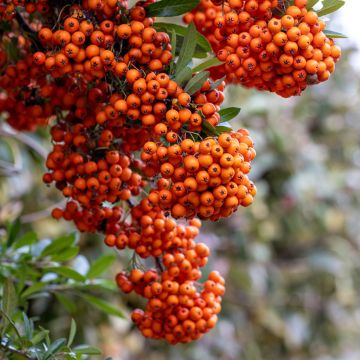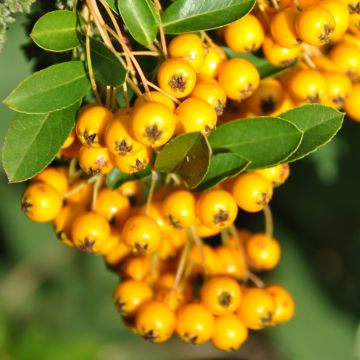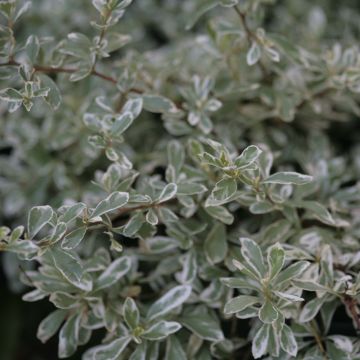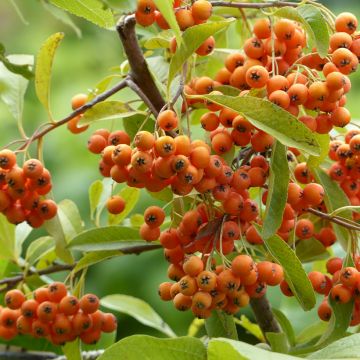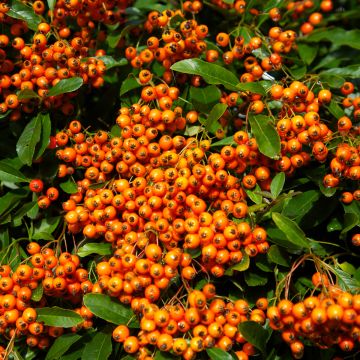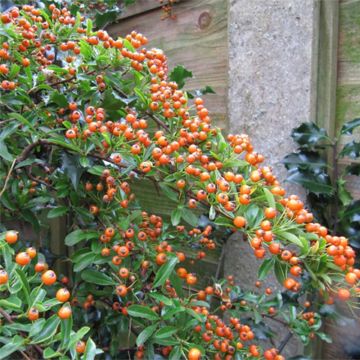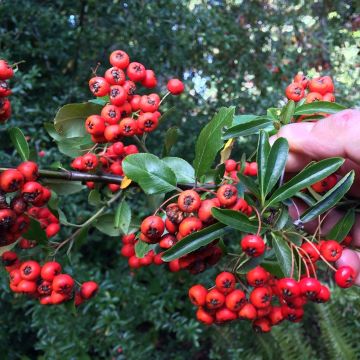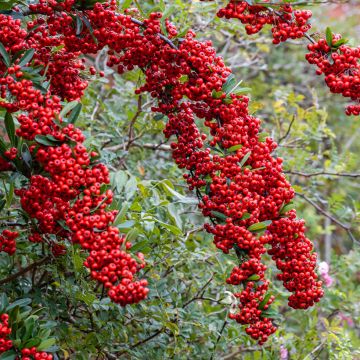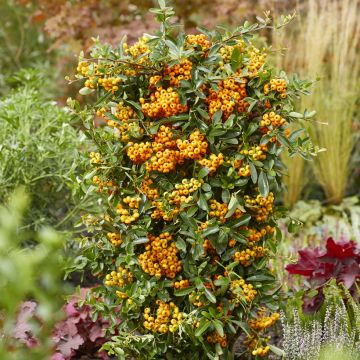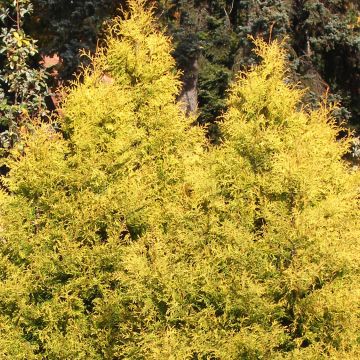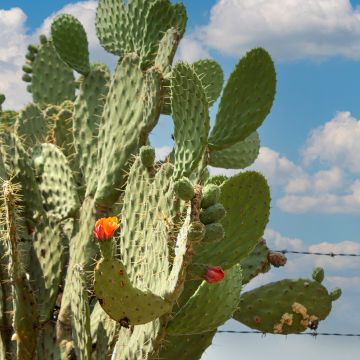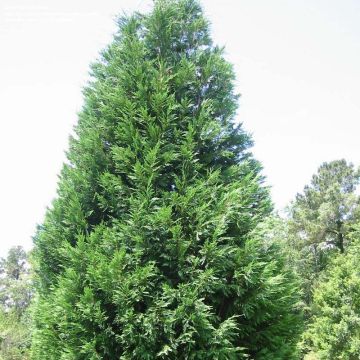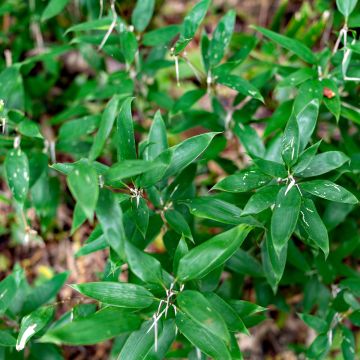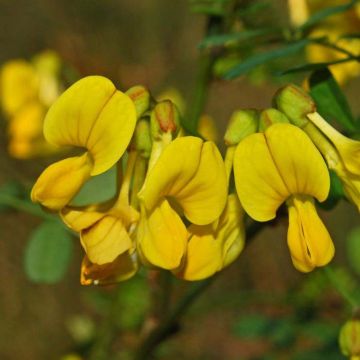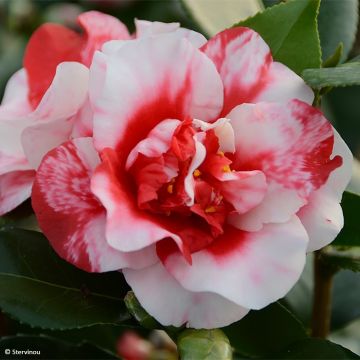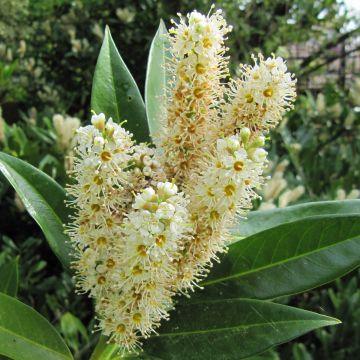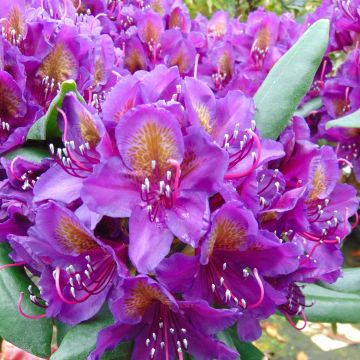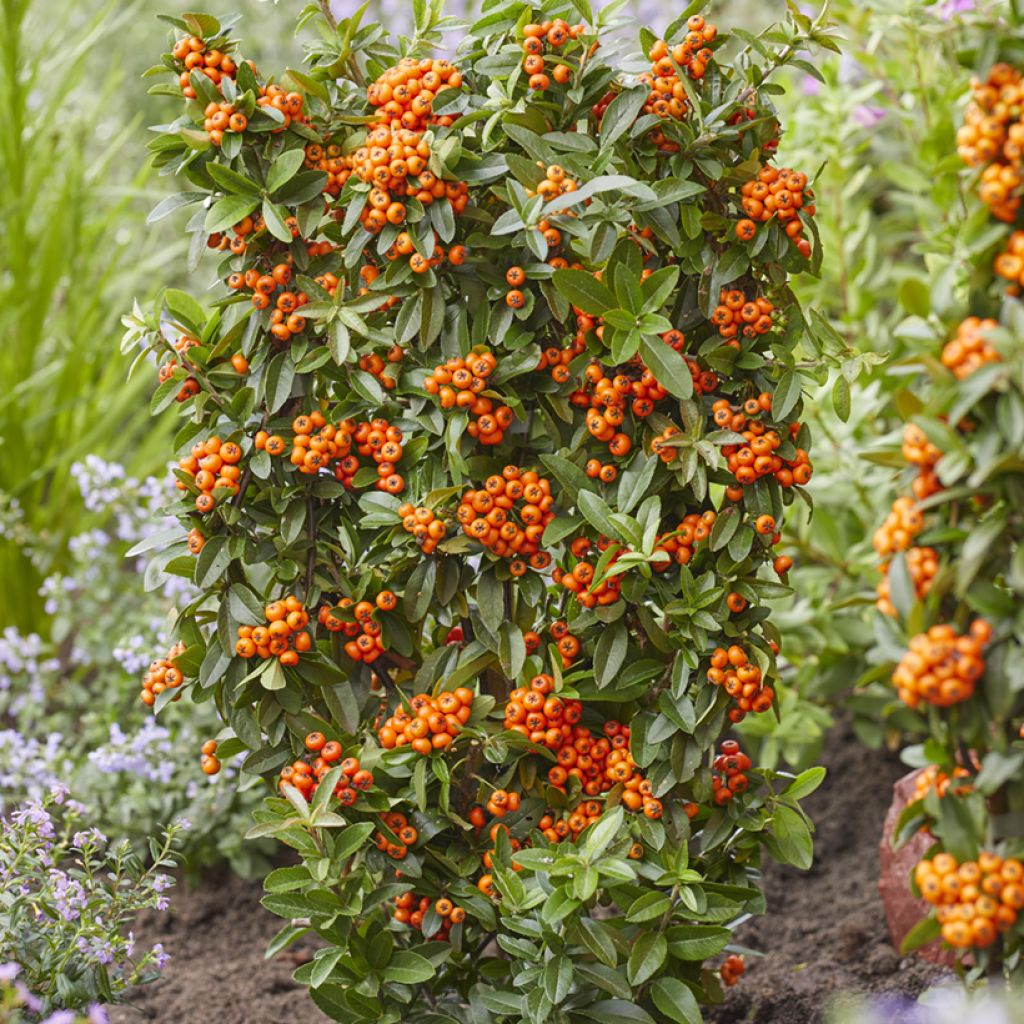

Pyracantha Orange Star
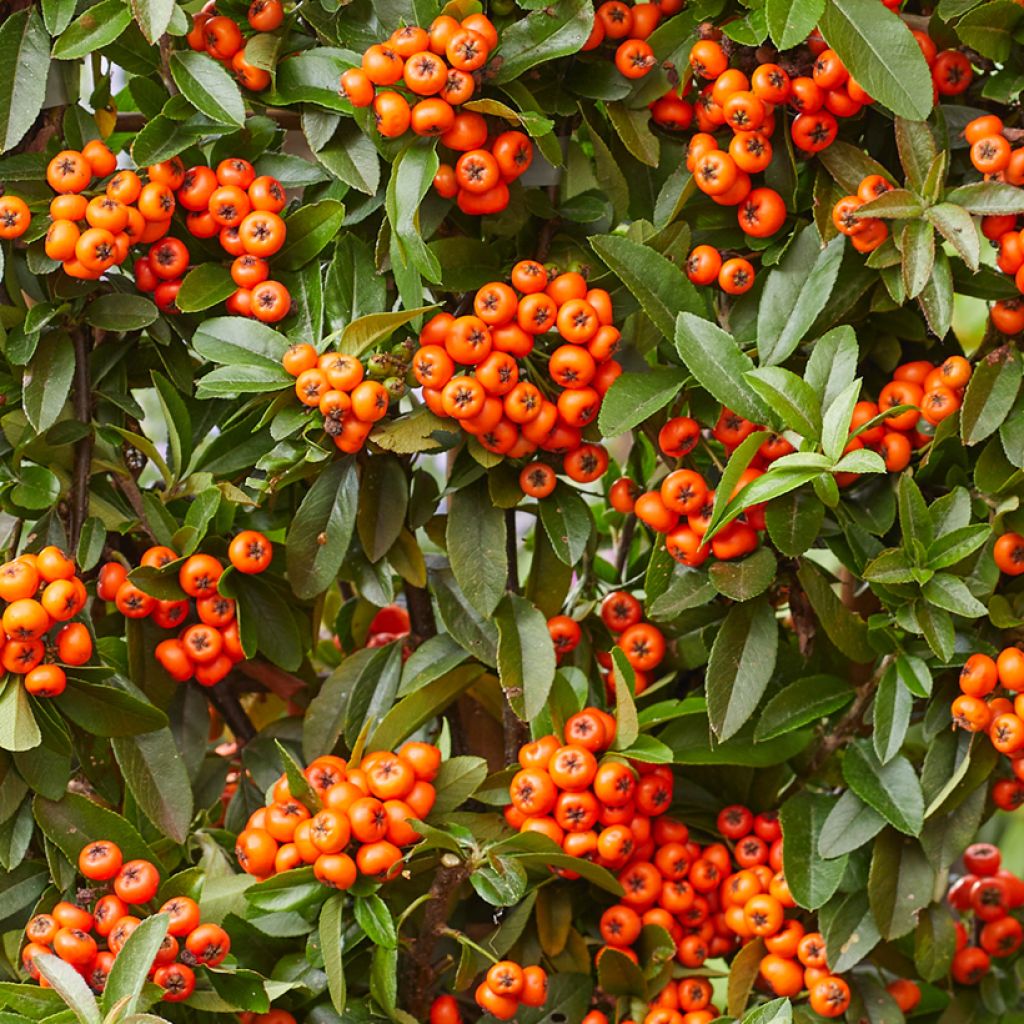

Pyracantha Orange Star
Pyracantha Orange Star
Pyracantha coccinea 'Orange Star' PBR EU 20212464
Scarlet Firethorn
Why not try an alternative variety in stock?
View all →This plant carries a 24 months recovery warranty
More information
We guarantee the quality of our plants for a full growing cycle, and will replace at our expense any plant that fails to recover under normal climatic and planting conditions.
From €5.90 for pickup delivery and €6.90 for home delivery
Express home delivery from €8.90.
Does this plant fit my garden?
Set up your Plantfit profile →
Description
The 'Orange Star' Pyracantha is a recent variety appreciated for its lack of thorns, which generally characterise firethorns, often used in defensive hedges. In May-June, it is covered with clusters of white flowers, beneficial to pollinating insects followed by many large, bright orange berries. They are decorative and remain on the bush throughout winter, serving as food for birds. Plant this evergreen bush in an informal hedge or a border. You can also train its branches as a climber or grow it in a container. It will adapt to all types of soil and grow well in sun and partial shade making it one of the easiest plants to succeed with!
From the Rosaceae family, Pyracanthas are native to Asia and southern Europe. Due to its thorny branches, it was traditionally planted in defensive hedges. However, its decorative berries that feed the birds and its nectar-rich flowers make it an asset for garden biodiversity. 'Orange Star' is a recent Dutch variety, 2021, obtained by Van der Sar VOF. This shrub has an upright and bushy habit, reaching up to 2m high and 1m wide. Its branches are thornless, unlike the majority of pyracanthas. Its evergreen leaves are a beautiful dark green. In spring, in May-June depending on the climate, it is covered with clusters of white flowers, particularly attractive to pollinators. This is followed by large round, green berries that turn bright orange in late summer. These non-edible fruits persist on the bush for a long time, until Christmas and even beyond. Cut a few branches to enhance your cut flowers.
This thornless variety has no use in defensive hedges. It is easy to grow in a large container or in a border alongside flowering shrubs. Its branches can also be trained against a wall. The 'Orange Star' pyracantha plays an essential role in maintaining garden biodiversity: its nectar-rich flowers attract pollinating insects and its berries feed birds in winter. So why not integrate it into a countryside hedge that provides food and shelter for birds seeking refuge in our gardens? Pair the 'Orange Star' pyracantha with an 'Everest Perpetu' ornamental apple tree and a guelder rose. The fruits of these two shrubs are also appreciated by birds.
Report an error about the product description
Plant habit
Flowering
Foliage
Botanical data
Pyracantha
coccinea
'Orange Star' PBR EU 20212464
Rosaceae
Scarlet Firethorn
Cultivar or hybrid
Other Pyracanthas
Planting and care
The 'Orange Star' Pyracantha thrives in sunny, or even partially shaded, wind-sheltered locations. It adapts to practically all types of terrain, with a preference for fertile and well-drained, acidic or neutral soils. The bush is hardy and withstands summer drought once well established. In the case of very poor or rocky soil, however, add planting compost to mix with the existing soil. Water regularly during the first two years after planting, especially during hot and dry periods. This hardy bush requires no special care, except for occasional light pruning after flowering.
Planting period
Intended location
Care
This item has not been reviewed yet - be the first to leave a review about it.
Evergreen shrubs
Haven't found what you were looking for?
Hardiness is the lowest winter temperature a plant can endure without suffering serious damage or even dying. However, hardiness is affected by location (a sheltered area, such as a patio), protection (winter cover) and soil type (hardiness is improved by well-drained soil).

Photo Sharing Terms & Conditions
In order to encourage gardeners to interact and share their experiences, Promesse de fleurs offers various media enabling content to be uploaded onto its Site - in particular via the ‘Photo sharing’ module.
The User agrees to refrain from:
- Posting any content that is illegal, prejudicial, insulting, racist, inciteful to hatred, revisionist, contrary to public decency, that infringes on privacy or on the privacy rights of third parties, in particular the publicity rights of persons and goods, intellectual property rights, or the right to privacy.
- Submitting content on behalf of a third party;
- Impersonate the identity of a third party and/or publish any personal information about a third party;
In general, the User undertakes to refrain from any unethical behaviour.
All Content (in particular text, comments, files, images, photos, videos, creative works, etc.), which may be subject to property or intellectual property rights, image or other private rights, shall remain the property of the User, subject to the limited rights granted by the terms of the licence granted by Promesse de fleurs as stated below. Users are at liberty to publish or not to publish such Content on the Site, notably via the ‘Photo Sharing’ facility, and accept that this Content shall be made public and freely accessible, notably on the Internet.
Users further acknowledge, undertake to have ,and guarantee that they hold all necessary rights and permissions to publish such material on the Site, in particular with regard to the legislation in force pertaining to any privacy, property, intellectual property, image, or contractual rights, or rights of any other nature. By publishing such Content on the Site, Users acknowledge accepting full liability as publishers of the Content within the meaning of the law, and grant Promesse de fleurs, free of charge, an inclusive, worldwide licence for the said Content for the entire duration of its publication, including all reproduction, representation, up/downloading, displaying, performing, transmission, and storage rights.
Users also grant permission for their name to be linked to the Content and accept that this link may not always be made available.
By engaging in posting material, Users consent to their Content becoming automatically accessible on the Internet, in particular on other sites and/or blogs and/or web pages of the Promesse de fleurs site, including in particular social pages and the Promesse de fleurs catalogue.
Users may secure the removal of entrusted content free of charge by issuing a simple request via our contact form.
The flowering period indicated on our website applies to countries and regions located in USDA zone 8 (France, the United Kingdom, Ireland, the Netherlands, etc.)
It will vary according to where you live:
- In zones 9 to 10 (Italy, Spain, Greece, etc.), flowering will occur about 2 to 4 weeks earlier.
- In zones 6 to 7 (Germany, Poland, Slovenia, and lower mountainous regions), flowering will be delayed by 2 to 3 weeks.
- In zone 5 (Central Europe, Scandinavia), blooming will be delayed by 3 to 5 weeks.
In temperate climates, pruning of spring-flowering shrubs (forsythia, spireas, etc.) should be done just after flowering.
Pruning of summer-flowering shrubs (Indian Lilac, Perovskia, etc.) can be done in winter or spring.
In cold regions as well as with frost-sensitive plants, avoid pruning too early when severe frosts may still occur.
The planting period indicated on our website applies to countries and regions located in USDA zone 8 (France, United Kingdom, Ireland, Netherlands).
It will vary according to where you live:
- In Mediterranean zones (Marseille, Madrid, Milan, etc.), autumn and winter are the best planting periods.
- In continental zones (Strasbourg, Munich, Vienna, etc.), delay planting by 2 to 3 weeks in spring and bring it forward by 2 to 4 weeks in autumn.
- In mountainous regions (the Alps, Pyrenees, Carpathians, etc.), it is best to plant in late spring (May-June) or late summer (August-September).
The harvesting period indicated on our website applies to countries and regions in USDA zone 8 (France, England, Ireland, the Netherlands).
In colder areas (Scandinavia, Poland, Austria...) fruit and vegetable harvests are likely to be delayed by 3-4 weeks.
In warmer areas (Italy, Spain, Greece, etc.), harvesting will probably take place earlier, depending on weather conditions.
The sowing periods indicated on our website apply to countries and regions within USDA Zone 8 (France, UK, Ireland, Netherlands).
In colder areas (Scandinavia, Poland, Austria...), delay any outdoor sowing by 3-4 weeks, or sow under glass.
In warmer climes (Italy, Spain, Greece, etc.), bring outdoor sowing forward by a few weeks.

































